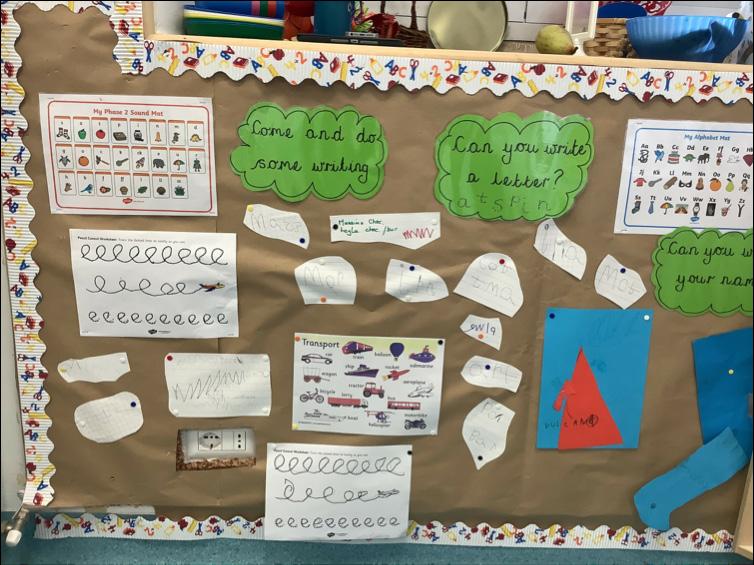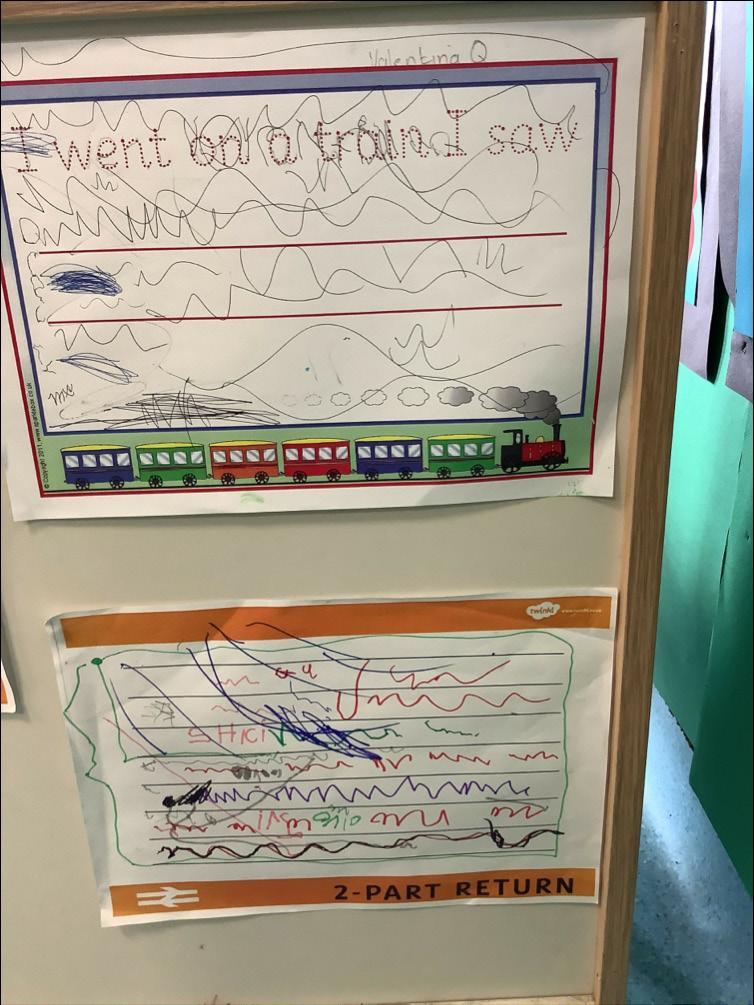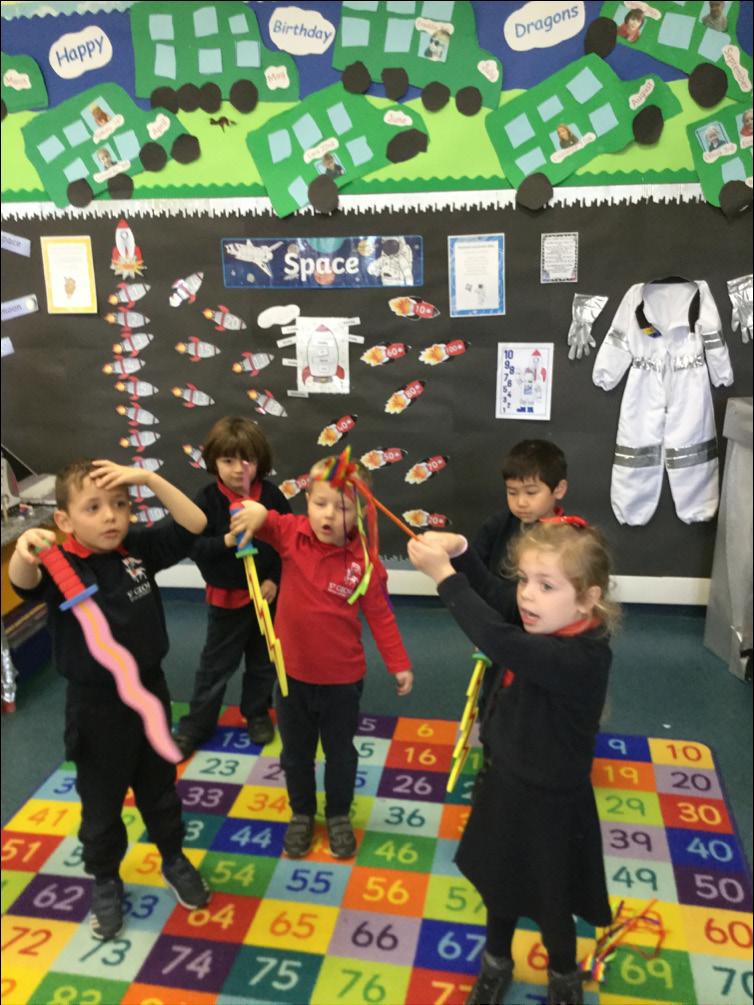
8 minute read
Developing writing in Child Initiated Play
Hannah Moore
Year 2 Class Teacher and Phase Coordinator
Advertisement
Learning through play based experiences is at the heart of the Early Years and Key Stage 1 Curriculum but how do we get our children to write during this independent, exploration time? Over the past few years we have been developing our approach to play based learning and have focused on enhancing writing in play. After attending a course on Continuous Provision in the Early Years by Alistair Bryce-Clegg, a leading expert in this area, I was overwhelmed yet inspired to bring the practice back to the learning environment. It would be an exciting adventure but where to begin was the big question. Luckily, I had a team who was also equally passionate about it and helped me to hone in on specific, achievable areas for development. As developing continuous provision would be a longer journey we decided to focus specifically on writing in play. Our aim was to develop a curriculum that was rich in opportunities for writing during play-based learning. To enable this, we considered a number of key areas to enhance the provision we had in place.
Physical Development
Before children are ready to hold a pencil, they need to develop their fine and gross motor skills. The development of fine and gross motor skills is closely linked to a child’s ability to write. Before children can control the muscles in their hands, they must control the larger muscles of the shoulders and arms. Physical development is a prime area in the Early Years curriculum and lays the foundations for writing.
ELG 04 Moving and handling: • Children show good control and coordination in large and small movements • They move confidently in a range of ways, safely negotiating space • They handle equipment and tools effectively, including pencils for writing
Therefore it was important to address this area to ensure that children were equipped with the skills needed to be able to write. Alistair Bryce-Clegg refers to Funky Fingers, Dough Gym, Zumba and Jedi writing as a way to improve this skill. We set about making time in the timetable to plan for specific interventions that were going to help the children to develop these fine and gross motor skills to support the physical development thus preparing them for writing.
To do this we considered how we could incorporate these elements into our Early Year and Key Stage One curriculum. We decided to get the children dancing, climbing, squeezing, pinching, squashing, scrunching, threading, constructing and tweezing. All these actions plus many more would help build the necessary skills needed for writing and most importantly it was fun, children were engaged and motivated. Every day the children would be dancing along to ‘Happy’ by Pharell Williams or special requests from the past including Buddy Holly! Children would squeeze, squash, push, poke, twist the dough along to their favourite songs. Music was the key to success. Children were highly engaged and the beat is crucial when performing the Dough Gym moves. It’s important that the children stand during these activities to enable them to develop their balance, posture, proprioception, hand eye coordination and bilateral movement.
Enabling Environments
development and can significantly raise attainment and love of learning when conducted correctly through careful assessment for learning’.
It was therefore important to encourage writing in play in order to make the best possible environment for learning and inform the assessment of the children in their child initiated play. We wanted to provide exciting opportunities for the children to explore in an environment where they felt safe enabling them to take risks, explore and achieve.
Through research and my own observations, I noticed that a topic based approach can often cause some children to lack interest when writing during adult guided learning. We aimed to increase the outcome of mark making and writing in play in order to motivate children to write independently.
‘High level engagement is what gives you the potential for high-level attainment. The more engaged a child is, the more they absorb and facilitate their learning’ (Alistair Bryce Clegg, Effective Transition into Early Years, page 6) In order to do this is was important to discover what the children were interested in and where they choose to play.
Creating the Right Environment
After researching this idea in various blogs and books written by Alistair Bryce Clegg. I came to the conclusion that writing should be accessible in all areas of play and that there should
no longer be a specific writing area. Children should be encouraged to write everywhere. Writing and mark making are basic skills and therefore should be practiced in all areas of learning using a variety of open ended resources.

Writing and mark making opportunities should come in many guises to enable children to have the greatest chance of engagement. Alistair Bryce Clegg suggested ‘dressing the area’ with interest to appeal to the group of children we are targeting and to maximize the potential for attainment. For many children writing and mark making is not their main interest when they are in their play. I observed many children particularly boys going straight to the construction area and often spending most of their time there unless they were called to join an adult to do a specific activity. Reluctantly, they would be asked to come away from their interest area to complete an activity designed by the teacher. However, the addition of writing and mark making resources in each area would provide more opportunities for writing where the children’s interests are and for adults to be able to use these resources at the point of interest when children are motivated and inspired.
Additionally, in Year 1 at the time, I observed that even though there was mark making equipment in the writing area, the children were not choosing to bring it into their play in other areas whether this was because they were not interested in writing or because they needed to feel free to select these resources independently, it was unclear. In order to raise the profile of writing and allow more opportunities for writing, we began to consider what other writing materials could we put into the different areas. We began to collect a variety of pens, coloured paper, squared paper, giant post it notes, scrap books, clipboards, little note pads and added them to each area of learning. We also discussed using little bags that could be filled with mark making materials that the children could carry round with them. These could be used for a specific group of children who wanted to challenge the higher achievers. Inside the little bags we discussed putting a collection of connectives or story openers that we wanted the children to use in their writing in their play.
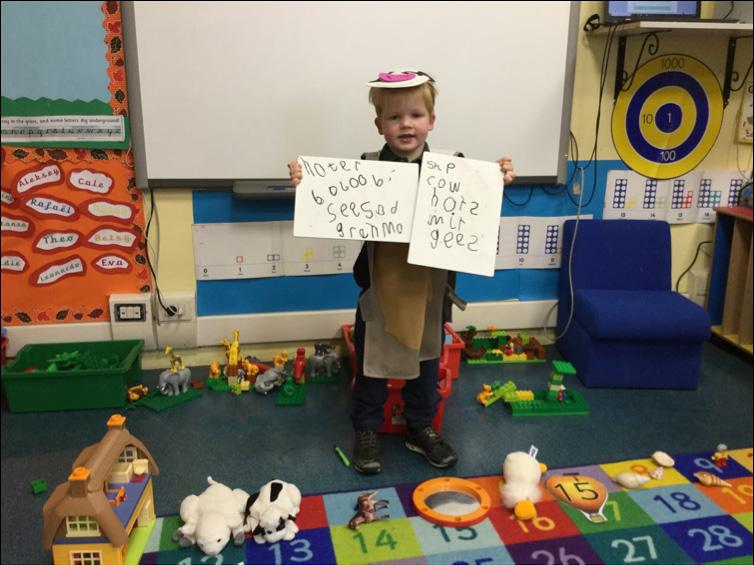
Adult Intervention, or not? Evolving Opportunities
In order for the children to access them they may need some support and this is why it is important to allow adults to be free to encourage the writing in the play, on the spot and where the children are most interested. The intervention of adults in their play needed to be done in the best way possible otherwise there is a risk that the children decide to move on or the play is interrupted. Adults needed to be confident knowing when to intervene and move the direction towards writing and when to stand back and observe the play.
Alistair Bryce Clegg maintains that ‘it is when children feel that sense of security that the brain needs to concentrate less on the survival instinct and can focus on other bits like learning’ (Clegg, 2017: 114) it was therefore necessary to consider how we would promote the sense of security. In Year 1, we understood that they was a need to develop our transition from EYFS to Year 1 in order to encourage high levels of attainment. Writing in play would help to encourage this as children would feel more relaxed and writing about things of interest to them. With the addition of accessible technology in the classroom, children have further opportunities to develop their writing skills. Children can take photos of their latest creation and add it to our online learning platform, Seesaw. Using the various tools, they can add titles, labels, captions and descriptions to their pieces. Children are motivated to write in this way allowing them to practise their composition skills across all areas of the curriculum.

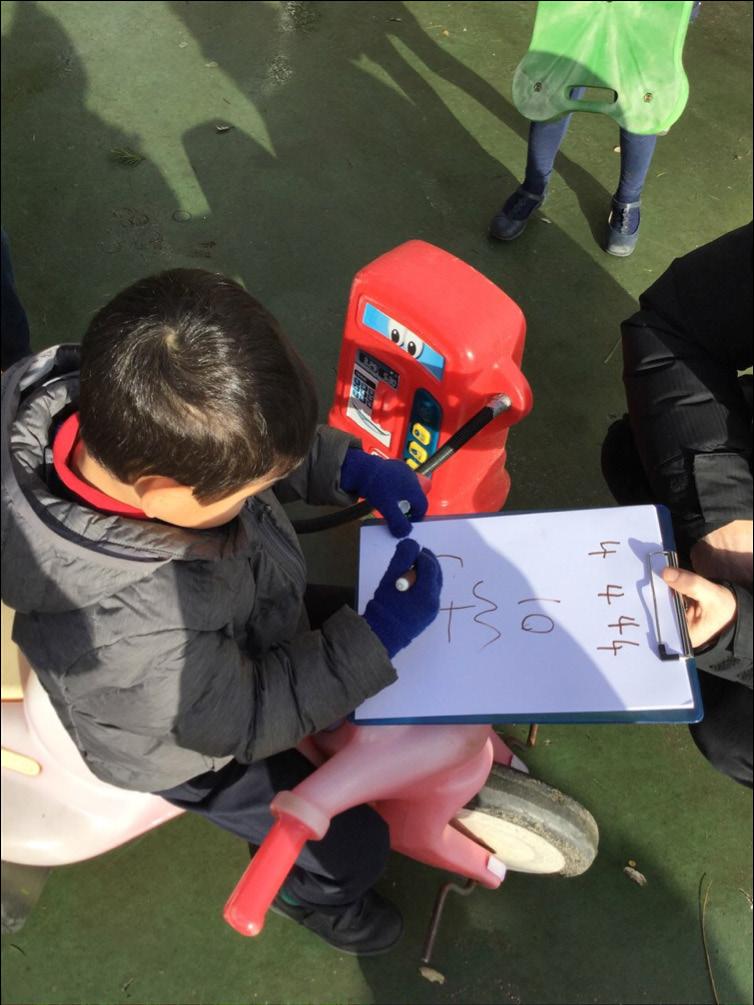
Celebrating Writing
An Early Years and Keys Stage 1 classroom is typically filled with colourful, busy displays. In order to raise the profile of writing further, we designed our learning displays to reflect the need to celebrate the learning at the time. It is important for the learning environment to be meaningful to the children. We wanted it to inspire, teach and promote selfesteem. Neutral environments allow children to see the things that are important to them and the things that we want them to notice. It is essential that children identify their own work within the display. It helps to build their sense of achievement and self-worth, hence impacting on the attaintment and motivation of that child. Bland and neutral allows the children’s work to stand out, to be visual and noticeable to them. Incorporating low boards into the classroom was a significant step in enabling the children to be involved in the creation of their classroom. The children would be able to put their own writing up on display and then we would draw the other children’s attention to it at various points throughout the day. Often at the end of the day, you would find a child eagerly dragging their parent into the classroom so they could ‘show off’ their wonderful writing. For writing to be purposeful, meaningful and engaging for our young learners, it is vital for the children to feel free to take risks in a safe environment where they can flourish and feel inspired. It is therefore important for us to continue to develop a curriculum rich in experiences and one which will have a positive impact on the children’s learning and lay the foundations for writing.
